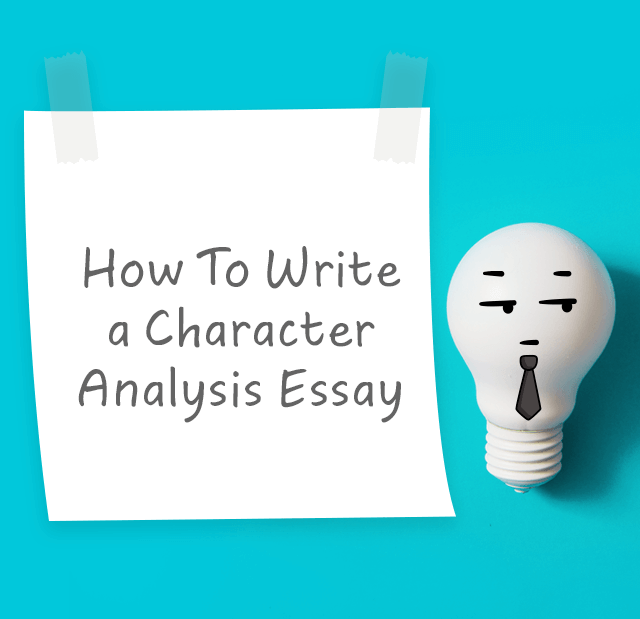
A character analysis essay is one of the most complicated academic assignments that students usually write for Literature or English classes. Generally, this kind of essay writing requires you to describe the character in the context of the story. This can be done through the analysis of the relationship between the major and secondary characters or through your personal opinion of a particular character.

A character analysis essay is one of the most complicated academic assignments that students usually write for Literature or English classes. Generally, this kind of essay writing requires you to describe the character in the context of the story. This can be done through the analysis of the relationship between the major and secondary characters or through your personal opinion of a particular character.
So, there is something you should learn before getting down to work. What is a character analysis and how to approach it? Let’s try to find the answers in the information below.
A character analysis is a kind of essay where you examine behaviors, motivations, and actions of characters. Also, a character analysis is an in-depth assignment that makes you think critically about one or more characters and make judgements after analyzing the text. In most cases, it is used for the analysis of literary works. This form of academic writing involves personalities’ descriptions and conflicts with others they experience throughout a story. This analysis aims to provide a critical assessment of characters and build up conclusions based on the storyline. You may analyze a personality through his or her behavioral patterns or internal and external conflicts.

When you’re asked to write a character analysis, you must look at that story from a different angle. How? This is not your average reading for fun. Your task is to focus on the character synopsis and everything that’s associated with the people involved in the story.
A character analysis aims to evaluate a character’s traits, their functions, and the conflicts they have to deal with throughout the story. During the analysis, you will need to think critically, ask questions, and make conclusions about the character. To make your analysis informative, you will have to go beyond available descriptions that are written by the author. To understand the meaning of every event, phrase, and action, you will have to read between the lines. Don’t be afraid of using some additional resources if you feel like knowing more about the epoch a character lives in. If you want to gain an alternative opinion about a character, do not hesitate to find out your friends’ or internet users’ thoughts. Thus, thorough research may help you develop some creative ideas that will add great value to your future paper.
You should have a deep understanding of a character before starting an in-depth analysis. While a good character has many sides, there are some standard features to be considered:
Before you start writing, you may wonder how to do a character analysis. Of course, you need to select a character to describe. In some cases, your professor will give you a character to talk about. By reading a story several times, you may notice the tiniest details. Ideally, you can use a highlighter or marker to mark each spot where your character is mentioned. Here are some more details of how to start with a character analysis:
When you need to analyze one character, you can make it from the perspective of several types at once. The character’s ability to change can create an additional source of analysis. At the same time, the complex and changing personality will be more interesting for the detailed analysis. To make it easier to work with such characters, you should focus on their characteristics, namely their importance for a story, actions, events, and so on. In most cases, you have to cover three major points:
Reveal the main features of a character to provide the reader with a portrait. By adding some facts and descriptions of actions, you will enable a deeper understanding of the analyzed hero. There is no need to use some words with broad meanings like “bad,” “nice,” “honest,” etc.
Describe the importance of the particular character in the context of the general story. Also, you should pay attention to their actions and their ability to move the events forward.
Analyze the changes the character has gone through and what features they have now. You should focus on the progress of a person, even if it is regressive.
In the character analysis essay outline, you should describe two or maybe even three specific character categories. Your mission is to describe the personality of the character, their function in the story, and the value they have.
The majority of characters will have to go through particular transformations until the end of the story. You should pay special attention to whether the character becomes better or worse, stronger or weaker, rich or poor. Mention any areas or scenes where these transformations occur. In the story, you will recognize them from the cues like “it was then that she understood…” or “for the first time in months, he…”
To make your analysis essay correct, you need to explore your character deeply. If you set some points you will follow in your work, you will manage to be consequential in your analysis. So here are some crucial nuances you should remember to describe the character:
You should focus on the reasons that make the character in a story to make a particular decision or take a specific action. You have an opportunity to explore the rightfulness of those actions as well as their reasonability. While you are asked to express your thoughts about certain events and feelings, you should be objective by looking beyond the cover.
Every action taken by a character can say a lot about his/her personality. You should not skip any events because it can be important for the general story and reveal some info about the character, his/her attitude to things, etc.
You should pay attention to the words the person uses because they can say a lot about their personality. Their accents and phrases may provide you with valuable information about nationality, social status, education, or even age of a character.
There are two major sources of the description: from other people in a story and the author. The author can provide the reader with one attitude and description of the major character, while secondary heroes in a story may describe them from their own perspective. At that point, their conclusions may be totally different, yet they’ll provide you with an understanding of the person’s nature.
The way people refer to a person also determines the features of a character. They may have nicknames or other names that will demonstrate their background and the attitude of other characters toward them. You can also define the origin as well as other important nuances.
By using a readymade character analysis example, you can concentrate on the creative process itself. Here are some nice examples of written character analysis based on a couple of popular stories:
Whether you follow a character analysis template yourself or ask a professional essay writer to complete this paper for you, you should not forget the common principles of work. Luckily, Handmadewriting’s specialists always follow the standard rules for character analysis writing:
Are you ready to proceed with your character analysis paper? Once you learn all writing rules and tips, you will be able to finish an excellent paper before the set deadline.